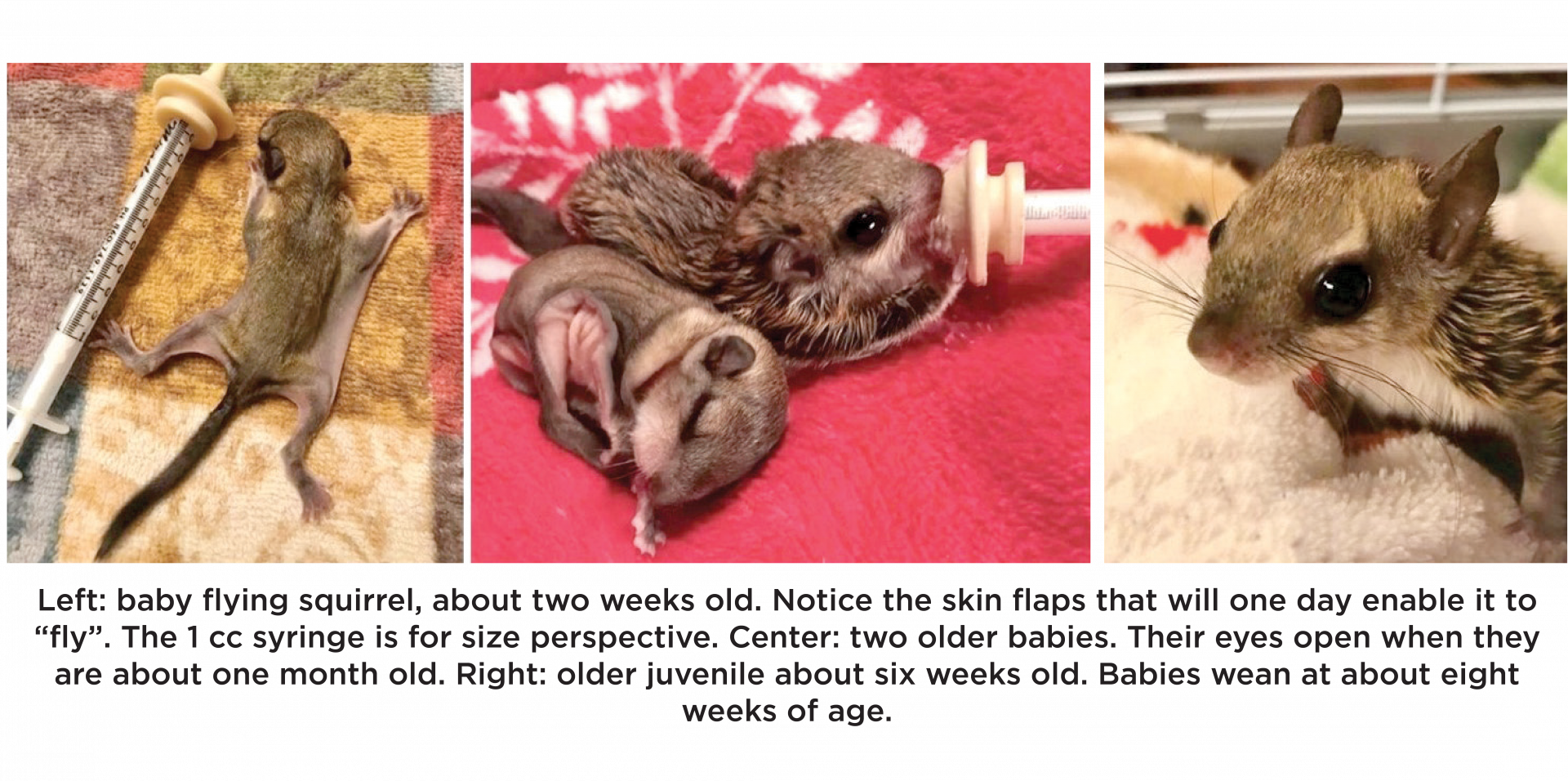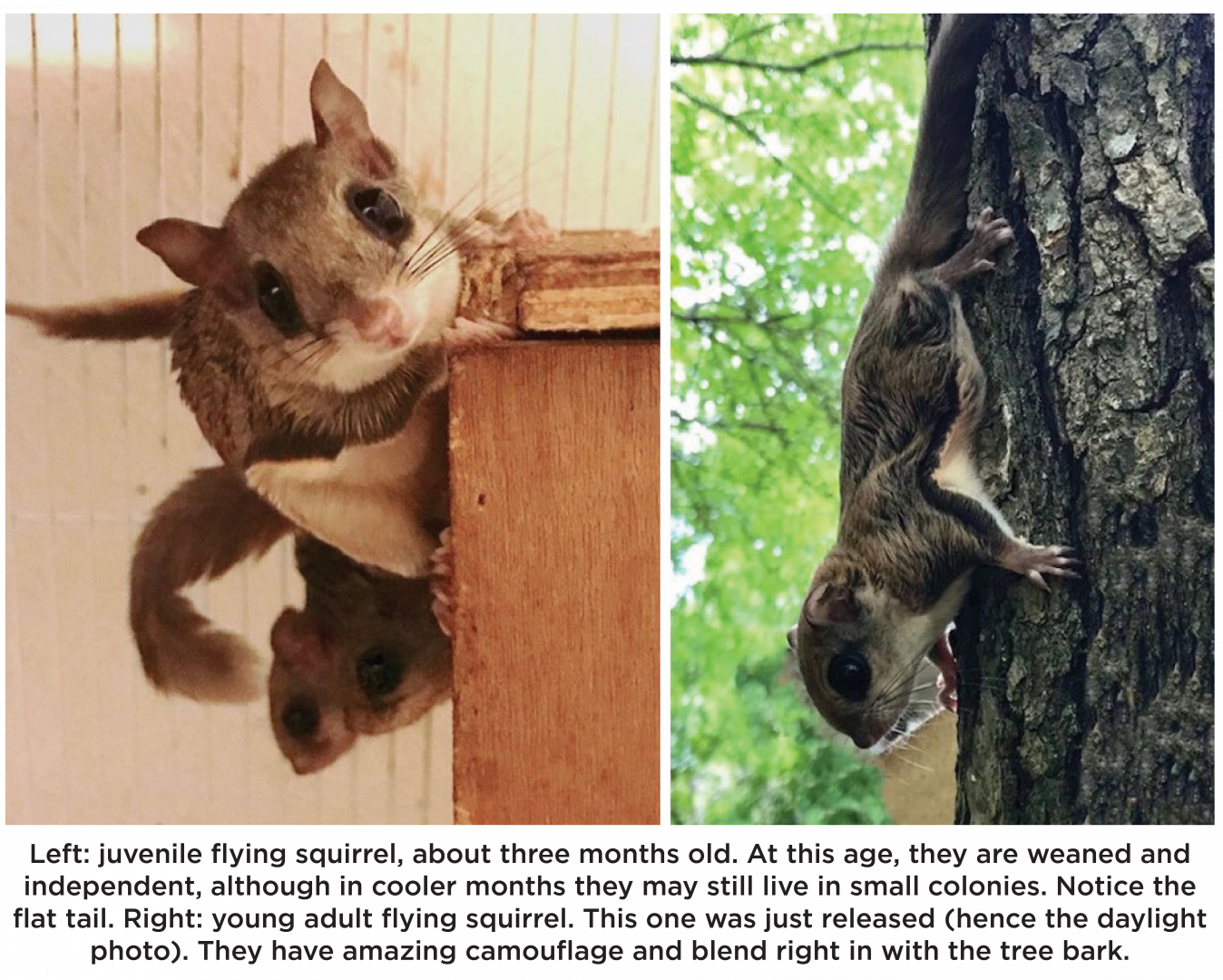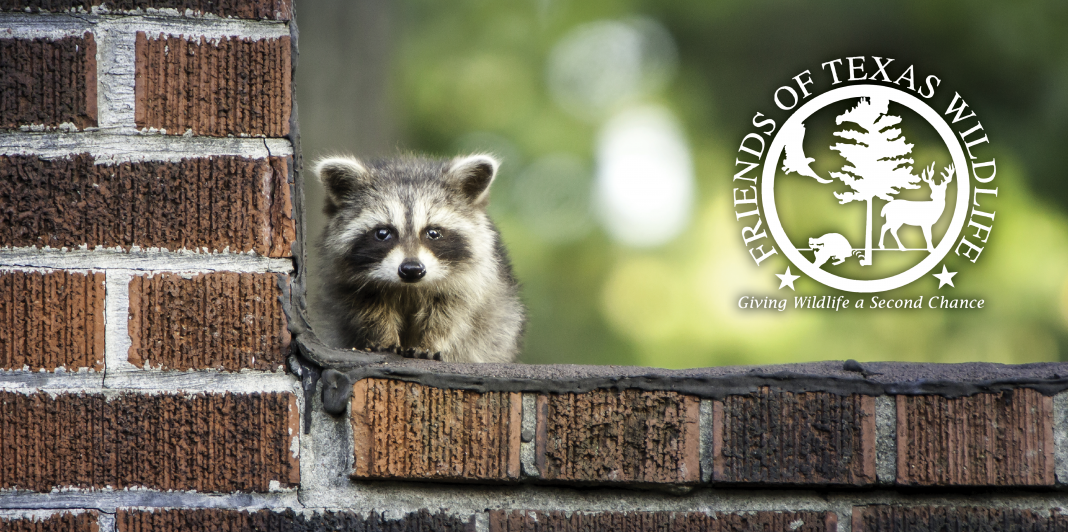The air is finally feeling crisp and cooler as summer reluctantly gives way to autumn. On a still and quiet evening, you decide to go for a short stroll. As you walk along, you can’t help but feel like you’re being watched…you pause, and look around, but you see nothing. You continue walking, hearing some quiet squeaks coming from the trees. Crickets? Frogs? Suddenly, you hear some rustling in the branches above and look up. It’s only the wind, you tell yourself, until you notice that it’s just one lone branch that is gently swaying…and there is no wind! You walk a little faster now, your eyes darting around quickly from left and right. Now the sound is coming from another tree! You shine your trusty flashlight into the leaves of the tree, slowly panning around. Then, there, you see it…two eyes shining back at you from high in the leaves above! Just as quickly, the eyes disappear, and you hear another limb rustling, and then it’s gone. Ok, you tell yourself, something is definitely there, and it seems to be moving from tree to tree, seemingly effortlessly and almost silently…but those EYES! You didn’t imagine that, right?
 Is it time to run? Well, if this was a true ghost story, then yes. However, we’re just having a little spooky fun with you this month. The chirping, the gentle rustling, something moving from limb to limb overhead, and the eye shine…in our story, all those characteristics belong to the adorable, nocturnal flying squirrel!
Is it time to run? Well, if this was a true ghost story, then yes. However, we’re just having a little spooky fun with you this month. The chirping, the gentle rustling, something moving from limb to limb overhead, and the eye shine…in our story, all those characteristics belong to the adorable, nocturnal flying squirrel!
Many people do not even realize we have flying squirrels in our area, as they are secretive little animals. Northern flying and southern flying squirrels are the two flying squirrel species indigenous to North America. Both species have gray-brown fur; the northern flying squirrel has belly fur that is gray at the base, but the southern flying squirrel has belly fur that is all white. In our area of Texas, we have southern flying squirrels. Full grown southern flying squirrels are about 8 to 10 inches long and about the size of a hamster. Their tails, while bushy, are flat as opposed to rounded.
Flying squirrels travel from tree to tree by launching themselves from a high branch and spreading out their limbs so that the gliding membrane is exposed. They use slight movements of their legs to steer, and their tail acts as a brake upon reaching their destination. They don’t truly fly (bats are the only mammals that can actually fly); but rather they glide like kites or hang gliders. They have very large eyes and good hearing to help them see and hunt at night. They are omnivores, eating insects, seeds, fruits, berries, nuts, tree buds, flowers, and sap. Flying squirrels prefer to live in deciduous and coniferous areas with tall trees. They make their homes in snags, woodpecker holes, nest boxes, and abandoned nests of birds and other squirrels. In the fall, they store up food in tree cavities and will stay together and share food for the winter, living in small colonies. Although quite common in our area, they are seldom seen since they are nocturnal. However, they can often be heard calling to each other from tree to tree. Their calls sound somewhat like peeper frogs; to listen to their sound, go to this link: http://wildlifeofct.com/websitesounds/flying_squirrel_lang_elliott.mp3. Often when people learn to recognize their calls, they then realize they have flying squirrels in their neighborhood.
 The southern flying squirrel mates in early spring and again in late summer. In our area, we most often have baby flying squirrels brought to us from October through January. Since hollow trees and branches are common nesting places, they are often found down after storms if limbs fall. After a gestation period of 41 days, the female gives birth to 2-7 young. The female feeds and raises the young on her own with no help from the male. Baby flying squirrels open their eyes when they are about one month old. The young are weaned at about two months of age, at which time they begin gliding and hunting with their mom. They are independent when they are about four months old. In the wild, flying squirrels live about five to seven years, but they are commonly preyed upon by owls, hawks, tree snakes, and climbing mammals.
The southern flying squirrel mates in early spring and again in late summer. In our area, we most often have baby flying squirrels brought to us from October through January. Since hollow trees and branches are common nesting places, they are often found down after storms if limbs fall. After a gestation period of 41 days, the female gives birth to 2-7 young. The female feeds and raises the young on her own with no help from the male. Baby flying squirrels open their eyes when they are about one month old. The young are weaned at about two months of age, at which time they begin gliding and hunting with their mom. They are independent when they are about four months old. In the wild, flying squirrels live about five to seven years, but they are commonly preyed upon by owls, hawks, tree snakes, and climbing mammals.
Flying squirrels are sometimes confused with sugar gliders, but they are quite different animals. Sugar gliders are indigenous to only Australia, Indonesia, and New Guinea, and also found wild in Tasmania (where they were introduced in the 1800’s). Although they can be acquired through the pet trade, they are not native to North America. They are not squirrels at all; they are small marsupials weighing 4 to 5 ounces and they measure 9½ to 12 inches in length (somewhat larger than flying squirrels). They are closely related to koalas and kangaroos.
To learn more about what we do and view pictures of many of the animals we assist, please visit our Facebook page at www.facebook.com/SavingTexasWildlife. Details and specifies-specific flowcharts regarding how to help found animals can be found on our website www.ftwl.org (click on “Help and Advice”). These charts are extremely helpful to determine if an animal truly needs rescuing or not. If you need assistance with a wildlife animal you may have found, please call us at 281-259-0039 or email us at [email protected]. Our educational programs (including camps, birthday parties, educational presentations, and Second Saturdays) have resumed. Our educational visitor’s center is open the second Saturday of each month from 10 a.m. to 2 p.m., located at 29816 Dobbin Hufsmith Road, Magnolia, Texas, so the next date is Saturday, October 9 ($5 per person, kids 3 and under are free). Unfortunately, our open house, which had been scheduled for October 9, has been postponed for now. We hope to reschedule that event for some time in the Spring of 2022.















